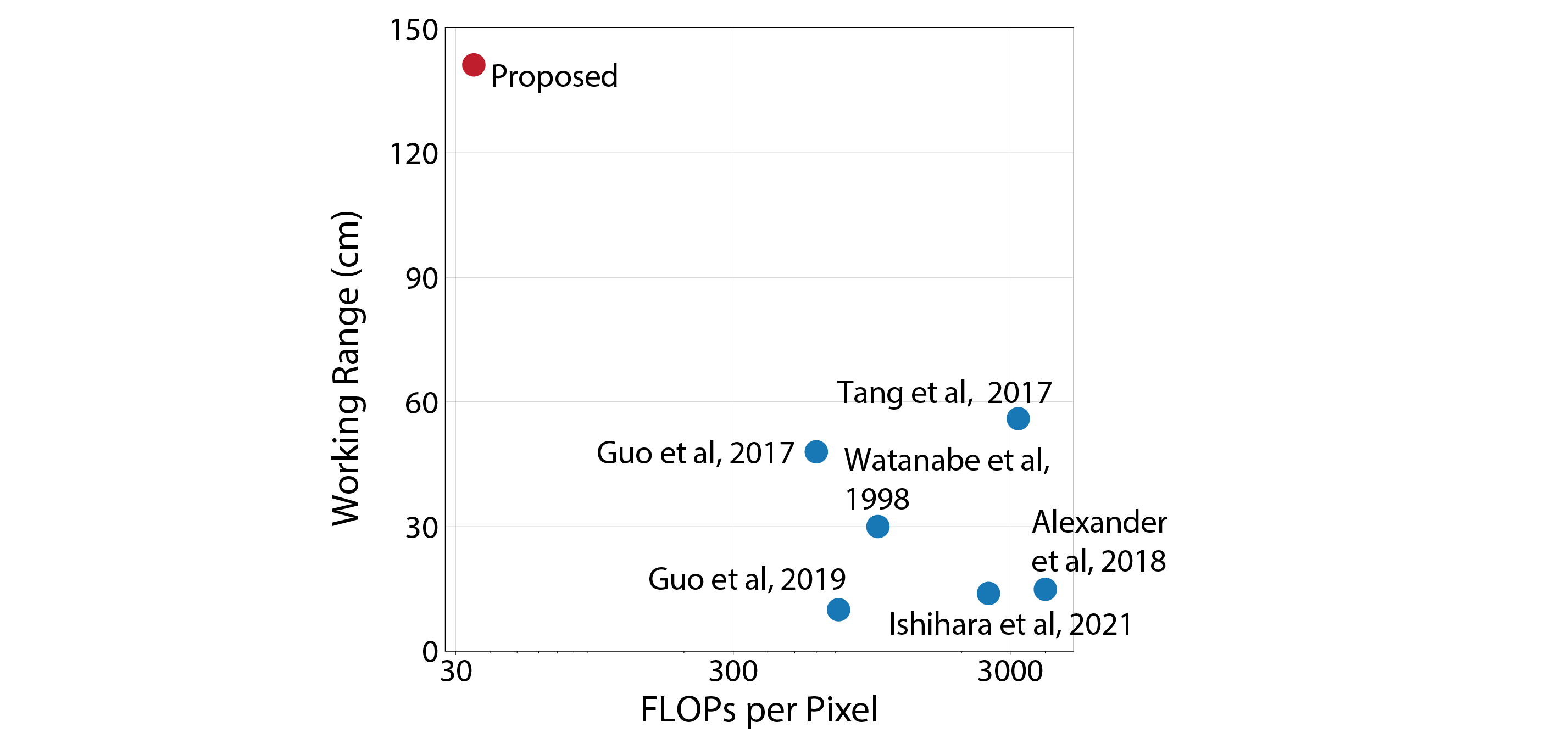

We propose depth from coupled optical differentiation, a low-computation passive-lighting 3D sensing
mechanism. It is based on our discovery that per-pixel object distance can be rigorously determined by a
coupled pair of optical derivatives of a defocused image using a simple, closed-form relationship.
Unlike previous depth-from-defocus (DfD) methods that leverage higher-order spatial derivatives of the
image to estimate scene depths, the proposed mechanism's use of only first-order optical derivatives makes
it significantly more robust to noise. Furthermore, unlike many previous DfD algorithms with requirements
on aperture code, this relationship is proved to be universal to a broad range of aperture codes.
We build the first 3D sensor based on depth from coupled optical differentiation. Its optical assembly
includes a deformable lens and a motorized iris, which enables dynamic adjustments to the optical power
and aperture radius. The sensor captures two pairs of images: one pair with a differential change of
optical power and the other with a differential change of aperture scale. From the four images, a depth
and confidence map can be generated with only 36 floating point operations per output pixel (FLOPOP), more
than ten times lower than the previous lowest passive-lighting depth sensing solution to our knowledge.
Additionally, the depth map generated by the proposed sensor demonstrates more than twice the working
range of previous DfD methods while using significantly lower computation.
